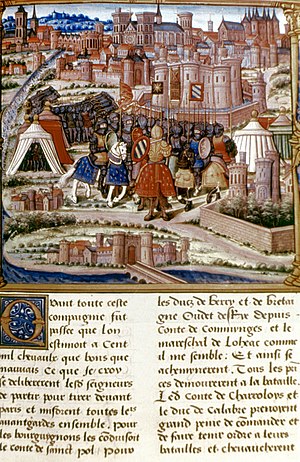The War of the Public Weal (French: La guerre du Bien public) was a conflict between the king of France and an alliance of feudal nobles, organized in 1465 in defiance of the centralized authority of King Louis XI of France. It was masterminded by Charles the Bold, Count of Charolais, son of the Duke of Burgundy, with the king's brother Charles, Duke of Berry, as a figurehead. The rebels succeeded in attaining concessions from the crown after several months of fighting, though conflict would break out again between the league and the crown in the Mad War of 1485 in a decisive victory for the crown.
- ^ Vaughan & Small 2010, p. 379.
© MMXXIII Rich X Search. We shall prevail. All rights reserved. Rich X Search

